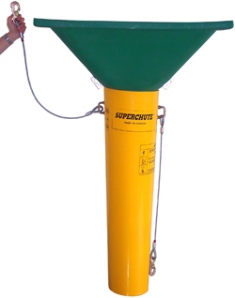So with the largest maritime project in recent memory being in full force and therefore attracting more and more specialists in different fields; including dredging. The dredging specialists here are Great Lakes Dredge and Dock corporation (GLDD) who signed a contract of $540 million. The contract involves the widening and deepening to 79 feet of the western parts of the canal; employing cutter suction and hopper dredgers alongside auxiliary support equipment.
However, with the magnitude of this project as well as the usage of technology such as dredging, known for side-effects such as environmental damage. According to marineinsight.com (2011) the most serious impacts of dredging on the marine ecology are:
- Alteration of soil deposit composition
- Alteration of habitats of marine organisms
- Turbidity of soil which changes due to the above alterations which creates harmful organisms and transferring them to other parts of the water.
- Dredging spreads contaminants that regroup and further spread in water to further degrade soil in long-term.
- Water getting polluted with soil particles from loose soil.
Along with the aforementioned types of damage, the dredgers employed, the cutter suction dredgers, are more prone to causing soil turbidity. Therefore, it is essential to talk about eco-friendly alternatives to the practice of conventional dredging methods in order to minimise the magnitude of damage to the marine ecology since Suez Canal is a large body of water being expanded.
Firstly, the release of turbid water is an issue and according to Takano, (2014) where this lies in the overflowing of the barge accompanying the dredger and transporting the residue. As the barge overflows it causes turbidity around the area; also being present around the dredger cutter. Therefore, the main measures will focus on those parts of the dredging operation.
To prevent release of turbid water from the barge directly to the sea it is essential to; 1) lower a tremie pipe from the barge into the sea to discharge overflow water naturally; 2) pump up the overflow water and discharge it closer to the dredger cutter to forcibly sucked up and re-circled with dredged material. However, it is also worth mentioning the negative elements of the methods with special focus on the first method where the diameter of the tremie pipe will not be wide enough to discharge larger volumes of turbid water; making method more prone to failure.
Another issue with method 1 is that it just may not be adequate in preventing turbidity, regarding the tremie pipe once more. Depending on the discharge depth, the turbidity could rise due to this method regardless therefore making the 2nd method is more effective as the re-circling system involved in partitioning the barge hopper to install a tank to collect turbid water pumped and discharged close to the dredger cutter.
An example of this method in action is the Chiyoda-maru dredger which was capable of pumping to a distance of 6,500m while only the ladder pump was operated with the onboard pump not being used altogether due to the barge-loading system alone being required when transferring dredge material to the barge alongside; modified with a re-circulation pump.
Cutter pump dredgers use cutters to excavate sediment from the seabed, sucking it up alongside the seawater meaning that the material around the cutter is easily stirred up; discharging the re-circulated water close to the cutter which results in disturbance of a large amount of material therefore spreading turbidity over the surrounding area. This warrants installation of a turbidity-prevention cover on top of the cutter, discharging re-circulated water inside the cover itself.
The barge itself also has to be modified alongside the dredger itself in order to maintain consistence and efficiency with the new additions; modifying the box barge to be eco-friendly without sacrificing efficiency. The barge has to be fitted with bulkheads on both ends of the hopper to create temporary storage tanks for overflowing water. Both tanks are connected with a pipe which allows re-circulated water to be drawn from them. Screens were also fitted to the bottom of the bulkheads with 1mm meshes preventing materials flowing from the hopper to the water tanks; enabling efficient re-circulation.
However, the act of dredging is not the only part which should be observed, instead the attention should also be given to what is left; the sediment. Firstly, the dredged material should be analysed in terms of biological, physical and chemical characteristics in order to establish its nature as sediment/dredged material is a resource. Sediment, essentially is clean residue therefore has feasible ecological application in coastal nourishment, land creation and soil improvement alongside dike building and application in terrestrial construction.



